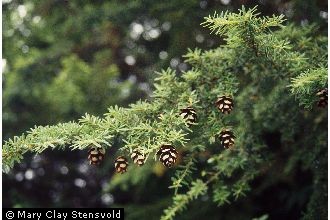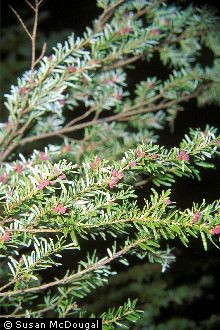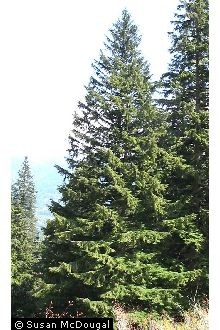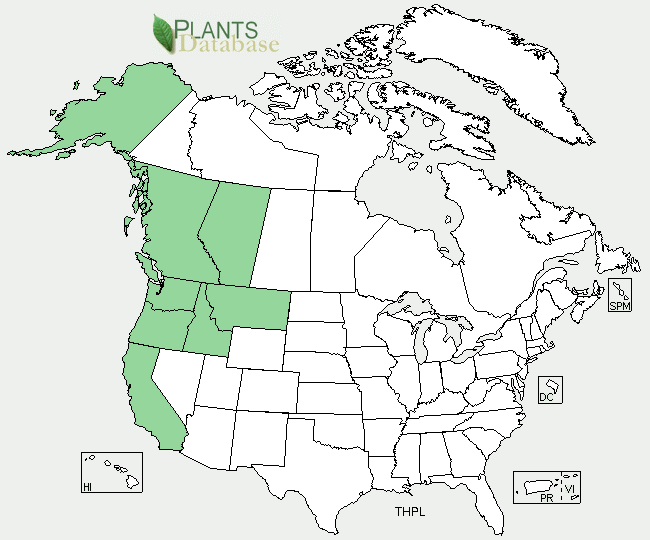Taxonomy: Kingdom - Plantae (plants). Subkingdom - Tracheobionta (vascular plants). Superdivision - Spermatophyta (seed plants). Division - Coniferophyta (conifers). Class - Pinopsida. Order - Pinales. Family - Pinaceae (pine). Genus - Tsuga Carrière. Species -Tsuga heterophylla (Raf.) Sarg.
Ecology: Western hemlock, also called Pacific hemlock and west coast hemlock, thrives in humid areas of the Pacific coast and northern Rocky Mountains. Western hemlock forests are among the most productive forests in the world. The successional role of western hemlock is clear; it is a climax species either alone or in combination with its shade-tolerant associates. Western hemlock is rated to be very tolerant of shade. Western hemlock responds well to release after a long period of suppression. Advance regeneration 50 to 60 years old commonly develops into a vigorous, physiologically young-growth stand after complete removal of the overstory.



